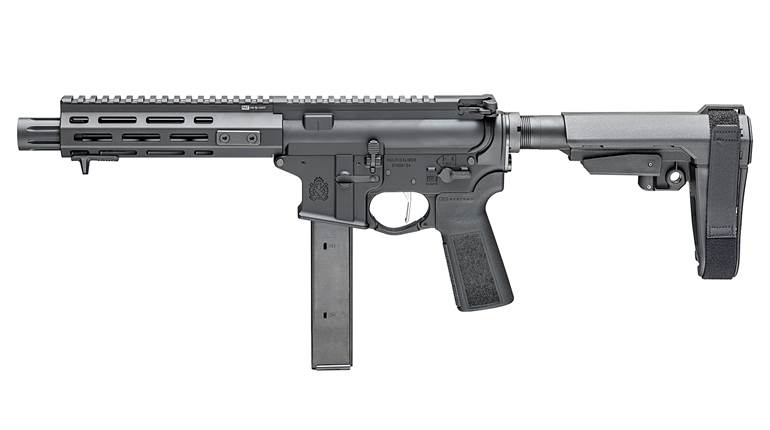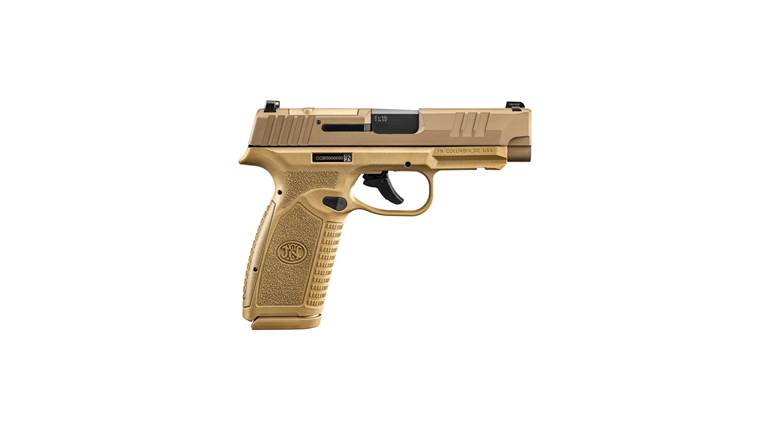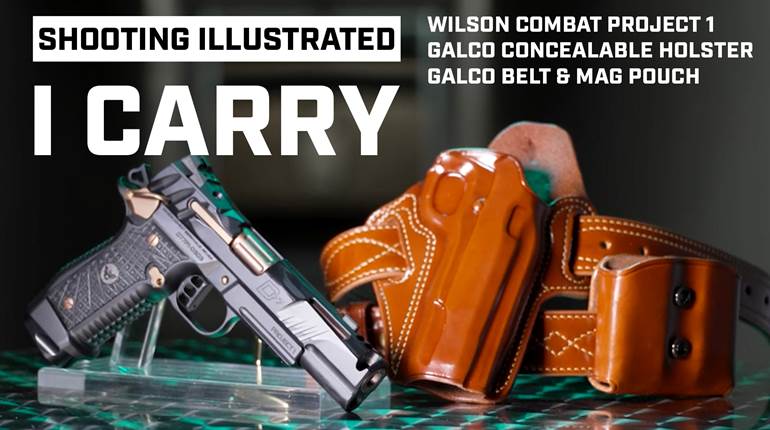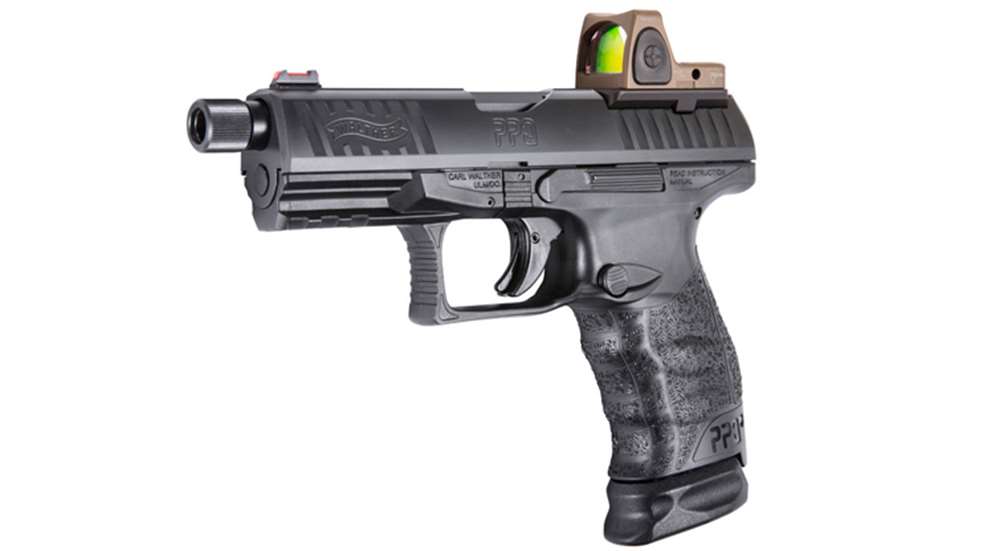
In 2011, Walther Arms launched the PPQ 9 mm semi-automatic pistol. Although it shared several important primary features with the P99, including sight and magazine compatibility, the PPQ introduced several important updates including a re-designed grip shape, large forward slide serrations and the company's Quick Defense trigger group. We would see the arrival of the PPQ M2 variant in 2013 followed by the popular PPQ M2 5" barrel Sport model in 2014. At the end of 2017, the company announced the arrival of the long awaited PPQ M2 Q4 TAC, a 4.6" barrel version with the same tactically advantageous features as the M2 Sport in a more compact package.
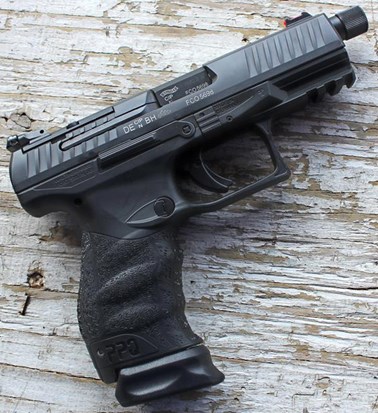
The PPQ is one of those defensive pistols that I've heard good things about but, until recently, hadn't had an opportunity to fire. So, when I received a call from the good folks at Walther last fall, my ears perked up. Not only was I offered a chance to wring out the new 4.6" threaded barrel, optics-ready PPQ M2 Q4 TAC, I could spend two days in southern Utah running drills and shoot houses with other members of the media. As you may have guessed by now, my answer was yes. Not only did I get to work with the PPQ for the very first time, I also got to see several PPQs burn through thousands of +P rounds in a short period of time.
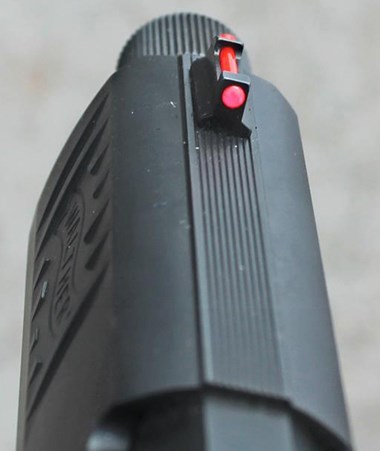
The PPQ M2 Q4 TAC is a double-action-only, striker-fired semi-automatic with a Browning-type tilt barrel. The M2 in the name indicates this pistol has a reversible round push-button type magazine release instead of the ambidextrous lever found on previous models. The Q4 stands for the 4" slide and TAC is, of course, short for Tactical. The sporting-purpose competition trigger installed in the Q5 models has been replaced with the original 5.6-lb. PPQ Quick Defense trigger which better serves the pistol's more tactical design.
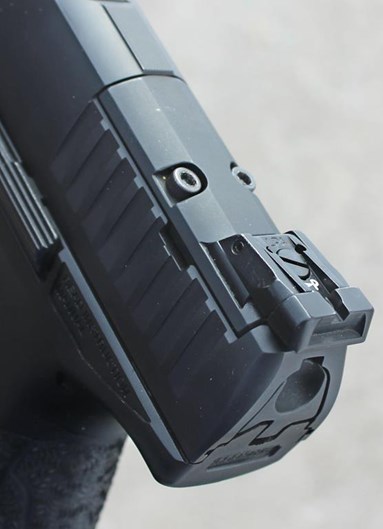
The slide is treated with the same durable matte black Tenifer finish as the barrel and internal components. It features front and rear cocking serrations, an enlarged ejection port and a grooved topstrap for reduced glare. The red fiber optic of the front sight is supported in a metallic housing with a square profile to match the notch of the fully adjustable rear sight. The rear sight is mounted directly into the removable filler plate that covers the section of slide that has been milled, drilled and tapped to accept an optic. Three additional slide plates are provided for attaching Trijicon RMR, Leupold Delta Point and Doctor brand optics.
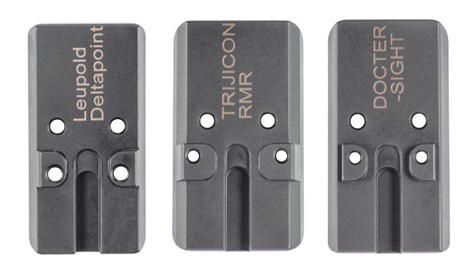
The 4.6" polygonally-rifled barrel is threaded at 1/2 x 28 TPI for suppressors and other barrel accessories. A thread protector is provided. The standard spring weight recoil assembly consists of a polymer guide rod with a captured flat wire spring. Another recoil assembly, tuned for use with sound suppressors, is shipped with the pistol.
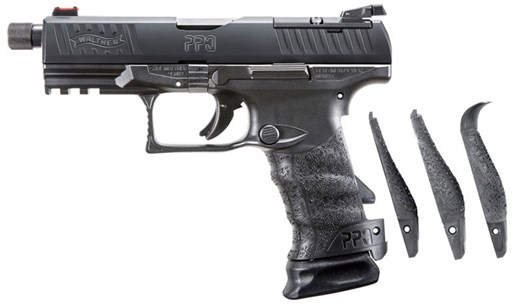
The black polymer frame's dust cover features a molded in 1.5" Picatinny accessory rail. The generous trigger guard is undercut for improved comfort with a textured finger rest along the front edge. Above the trigger is the takedown lever and the mounting point for the extended, low-profile ambidextrous slide stop. The polymer Quick Defense trigger sports an integrated safety lever with a listed trigger pull weight of 5.6 lbs. The pistol I worked with had a lighter trigger that weighed in at 4 lbs. 10 oz.
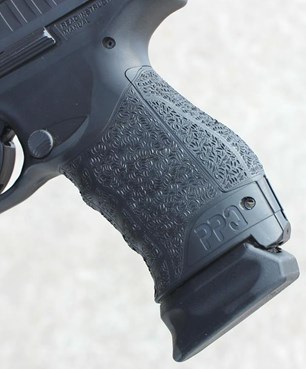
The grip frame is smooth and narrow directly behind the trigger housing to provide an easier reach for the trigger and magazine release. A ridge placed below the magazine release helps to prevent unintentional bump releases but does not get in the way of the button. The entire gripping surface of the finger grooved grip is covered with Walther's effective, but non-abrasive, cross-directional texturing. The pistol arrives with three interchangeable backstraps which can be exchanged by removing a pin at the base of the grip that also serves as a lanyard loop.
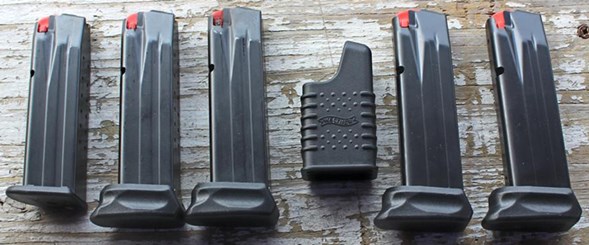
The pistol ships with three 15-round matte black steel magazines fitted with orange polymer followers. Two of the magazines are capped off with a +2-round extension while the third sports a flush fit baseplate. The other provided accessories include a useful hard case with custom cut out foam lining, a magazine loader and a lock.
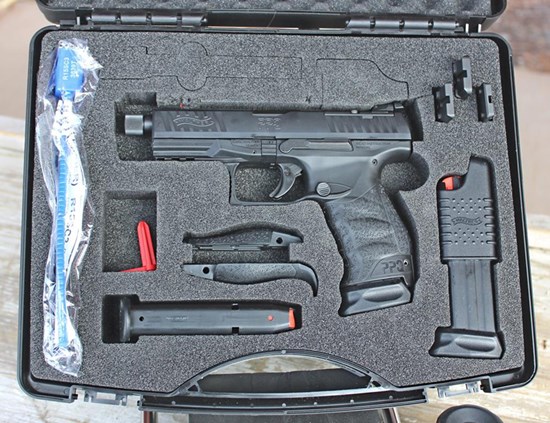
Field stripping the Q4 is a simple, no-tools-required process. Start by verifying the pistol is completely unloaded with the magazine removed. With the slide in the forward position, point the pistol in a safe direction and pull the trigger. Pinch both sides of the takedown lever and press it down into the trigger guard in order to release the slide. Pull the slide assembly forward and off of the frame. Lift out the recoil assembly. Remove the barrel's thread protector and then lift the barrel out of the slide. The pistol is ready for cleaning and lubrication.
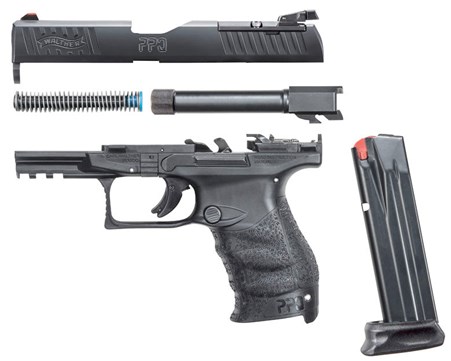
When participating in a multi-day outdoor shooting event, a quote from Mark Twain (one that I've mentioned before) usually comes to mind. He said, "A man who carries a cat by the tail learns something he can learn in no other way." I don't mean to imply that live-fire training is unnecessarily uncomfortable or that we should be unkind to our furry friends. My point is that we learn things about the operational qualities of a firearm when we are cold, dusty and under pressure to perform that may not be so clearly evident when firing a box or two in the comfortably controlled environment of an indoor range. In other words, are the features of the pistol helping to achieve your goals or are they just getting in the way?

When I drew the Q4 for the first time, I was impressed at how intuitively it pointed downrange and the comfortable feel of the grip in my somewhat smaller hands. Sometimes I have to switch out to the smaller interchangeable backstrap in order to get a proper fit, but the Q4 felt just fine with the mid-size unit in place.
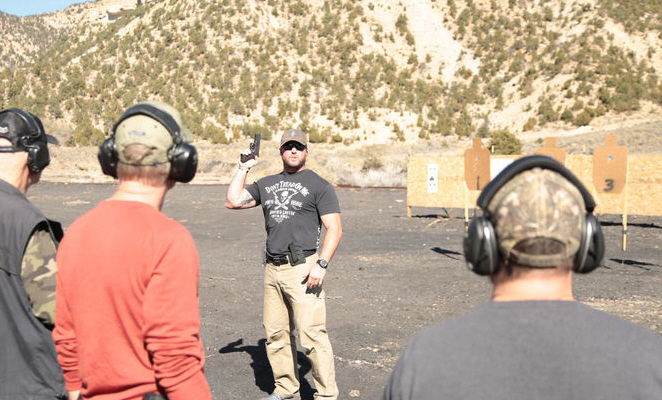
I experienced no malfunctions in the course of running square-range practice drills, maneuvering through the shoot house, working over and around parked cars or facing off against one another in a friendly dueling tree competition at the end of the day. All of the pistol's bits and pieces worked properly. I was none the worse for wear either because the grip and trigger were so comfortable to use.
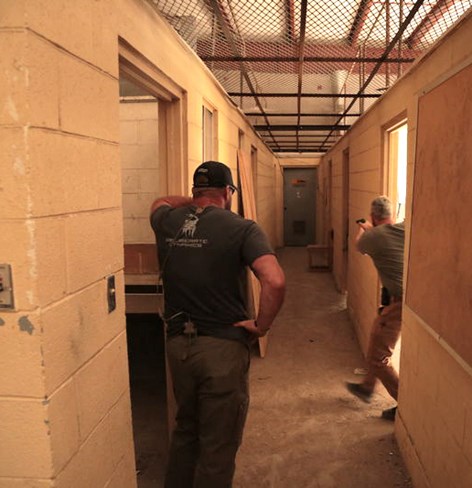
After the event was over, I asked for a Q4 to be sent to me for additional testing since there is knowledge to be gained from formal, bench-rested accuracy testing at 25 yards using factory iron sights that can't be learned in any other way. Once again, the pistol ran reliably throughout this second testing process with a variety of 9 mm ammunition ranging from affordable practice-grade to premium defensive loads. I asked for two more magazines in addition to the three provided with the gun. All five locked tightly in place, dropped free when the magazine release was pressed and ran reliably.
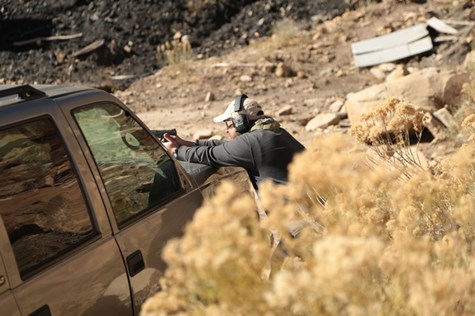
The ammunition provided for the event was Polycase Inceptor 9 mm 65-gr. ARX +P loads and ballistically matched RNP round nose loads with a listed velocity of 1695 f.p.s. I ran more of the RNP at the bench and it yielded a best single 5-shot group of 2.76" with a five group average of 2.94". Gorilla Ammunition's Silverback Defense 115-gr. all-copper hollow point printed a best group of 2.70" with a group average of 2.88". Sig Sauer Elite Performance 124-gr. V-Crown jacketed hollow points produced a best group of 2.53" with an average of 2.66".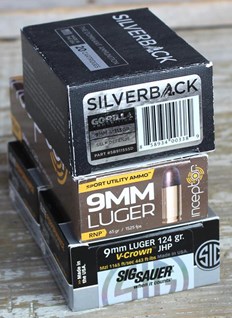
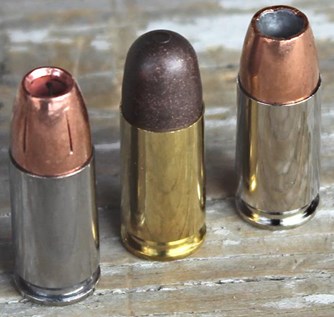
The new Walther PPQ M2 Q4 TAC semi-automatic is an exceptionally well-balanced 9 mm pistol that arrives ready to fill a wide variety of roles right out of the box. Enjoy the bright, easy to see fiber optic enhanced iron sights or install an optic. At 26.4 oz., the Q4 is light enough for daily carry but large enough for comfortable extended range sessions. This pistol can be used for home defense, personal protection, competition and shooting with sound suppressors thanks to the set of accessories that ship with it. It's a great fit for a variety of hand shapes and skill levels from newbie to gray beard with a suggested retail of $749.
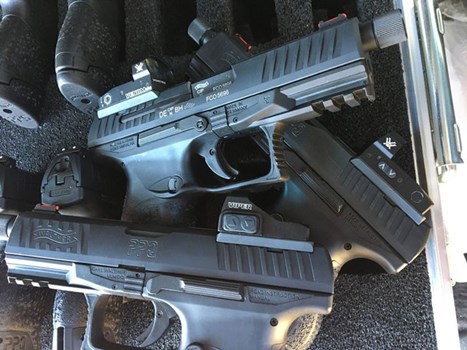
Specifications:
Manufacturer: Walther Arms
Model: PPQ M2 Q4 TAC
Action: Double-Action Browning Type Tilt Barrel Semi-Automatic
Caliber: 9 mm
Slide: Matte Black Nitride Finish, Optics Ready, Front and Rear Cocking Serrations
Frame: Textured Black Polymer with Interchangeable Backstraps
Front Sight: LPA Fiber Optic
Rear Sight: LPA Competition, Fully Adjustable
Slide Release: Low Profile Extended, Ambidextrous
Magazine Release: Round Button, Reversible
Trigger: Quick Defense with Integrated Safety
Trigger Pull: 5.6 lbs. (Listed), 4 lbs. 10 oz. (As Tested)
Barrel Length: 4.6"
Muzzle Threading: 1/2 x 28 TPI
Overall Length: 7.8"
Height: 5.1" with Flush-Fit Magazine
Slide Width: 1.1"
Grip Width: 1.3"
Weight: 26.4 oz. with Empty 17-Round Magazine
Capacity: 15+1 or 17+1 Rounds
Twist: 1:10” RH
Rifle Grooves: 6
Accessories: Three Optics Mounting Plates, Three Grip Inserts, Three Magazines, Standard Recoil Assembly, Suppressor Recoil Assembly, Magazine Loader, Hard Case, Lock, Owner's Manual
MSRP: $749













